Last Updated: 06/05/2025
Can Cats Eat Dog Food?
Cats are not small dogs and have their own unique biology and dietary requirements. Find out why feeding them dog food is not suitable.
Author: Dr Jacqui Victor BVSc MANZCVS (Medicine of Cats)
Reading Time: 31 minutes - long read
It's important to remember that cats are not small dogs! Cats have their own unique biology and dietary requirements, and whilst commercial cat food is specially formulated with these needs in mind, dog food is clearly not.
Although the occasional nibble of your dog's food is generally no cause for alarm, consuming dog food regularly can lead to nutritional deficiencies with serious health implications given dog food is not adequate to meet a cat's specific nutritional needs.
So what exactly are cats specific nutritional needs? What should you do if your cat is trying to steal your dog's food? And just how serious are the health implications of eating dog food? Keep reading to make sure you're doing everything you can to provide your feline friend with the best nutrition to keep them happy and healthy for as long as possible.
What's the Difference Between Cat and Dog Food?
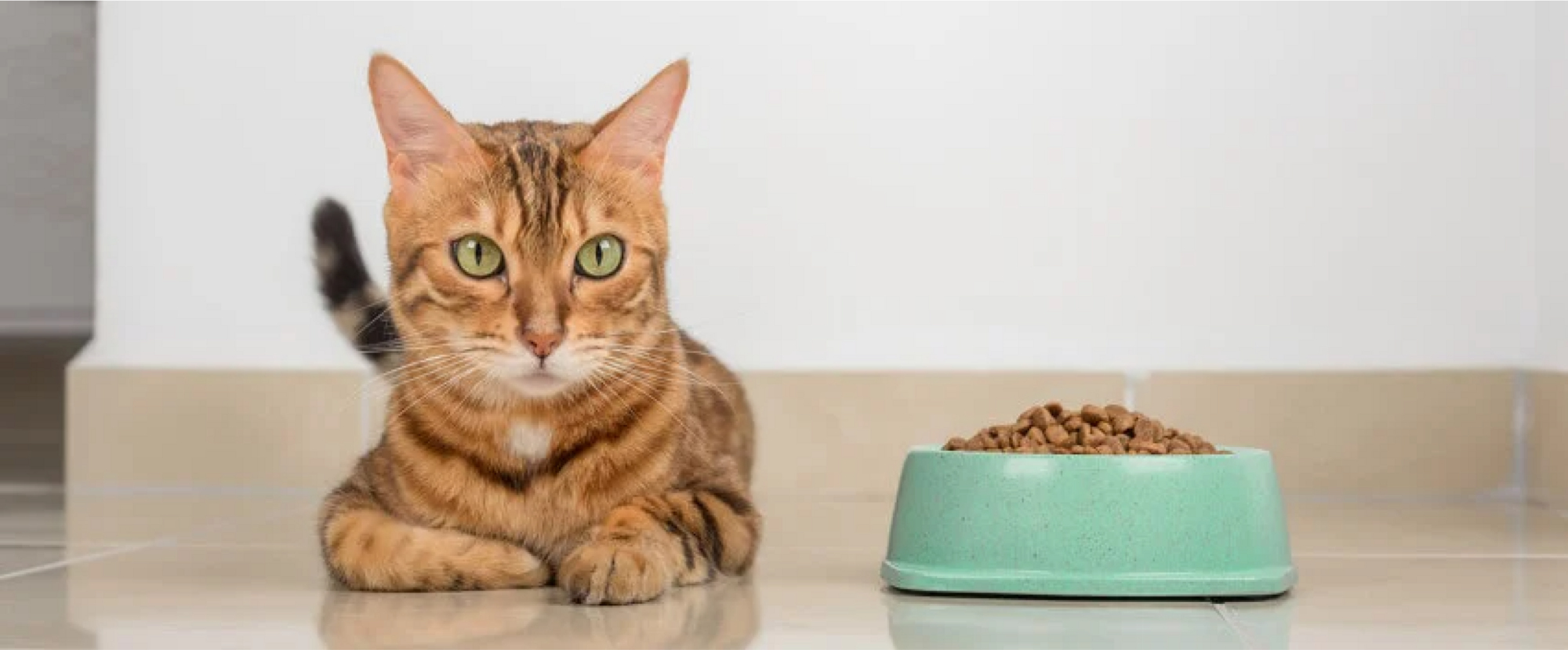
Cats are obligate carnivores, meaning they have a high requirement for dietary protein, whereas dogs are omnivores so they get their nutrition from both meat and vegetables. Cats have a limited ability to handle carbohydrates and so have little to no dietary need for them (however they can use carbs as an energy source), whereas in dogs carbohydrates play a larger role in their diet. In the wild, cats consume prey high in protein with moderate amounts of fat, and minimal amounts of carbohydrates, and therefore their bodies are metabolically adapted for this.
Other species-specific nutritional needs of cats include:
1. Proteins: Certain amino acids (the building blocks of proteins) such as taurine, arginine and methionine are known as 'essential amino acids' as cats' bodies are unable to synthesize these and therefore must consume them in their diet. Deficiencies in these amino acids can lead to serious health problems. For example, taurine deficiency can lead to retinal degeneration (blindness), reproductive issues and Dilated Cardiomyopathy (heart disease). Conversely, dogs can produce taurine themselves and therefore dog food is not supplemented with taurine.
2. Vitamins: Cats require the active forms of vitamin A and vitamin D in their diet (as they are unable to synthesize adequate amounts themselves), and also have a higher dietary requirement for many B vitamins (eg thiamine and niacin). Vitamin A is important for eye, skin and coat health, while vitamin D is important for bone health and regulating calcium levels in the body, and B vitamins are important for many bodily roles including energy metabolism. Therefore, cat food includes higher quantities of these vitamins compared to dog food.
3. Fatty acids: There are also essential fatty acids which can't be produced by cats, and therefore also must be consumed in their diet. One is arachidonic acid, which is important in regulating skin growth, reproductive and gastrointestinal health, and blood clotting. Dogs are able to make arachidonic acid themselves, and thus only cat food is supplemented with this fatty acid.
4. Calories: Cat food is higher in calories than dog food, given their higher requirements of protein and fat. Cats require a higher level of protein in their diets as they are obligate carnivores, and also require a higher level of fat in their diet to provide them with sufficient energy.
The Association of American Feed Control Officials (AAFCO) have established guidelines which detail the minimum levels of essential nutrients for dogs and cats at each lifestage (gestation/lactation, growth and maintenance). For example, the AAFCO guidelines state that adult cat food should contain (on a dry matter basis), a minimum of 26% crude protein and minimum of 9% crude fat, compared to adult dog food which should contain a minimum of 18% crude protein and 5.5% crude fat.
The taste profile of food differs between dog and cat food as cats have fewer taste buds than dogs, and don't have the taste buds for sweetness. Cat food itself is often smaller in portion size to dogs, and the kibble is adapted to the jaw size and chewing style of cats, which differs to that of dogs.
Cats also have a lower thirst drive than dogs, meaning that encouraging them to drink water is really important. Feeding wet food is a major factor in cats due to its high water content, and offering multiple water sources and water fountains around your home is also more important in cats.
Cat food specifics (compared to dog food):

Higher in protein

Higher in fat

Higher in calories

Supplemented with essential amino acids eg taurine, arginine, methionine

Supplemented with essential vitamins eg Vitamin A, Vitamin B, Vitamin D

Supplemented with essential fatty acids eg arachidonic acid

Specific taste profile to appeal to cats

Adapted kibble size and shape to suit cats
What Happens If My Cat Eats My Dog's Food?
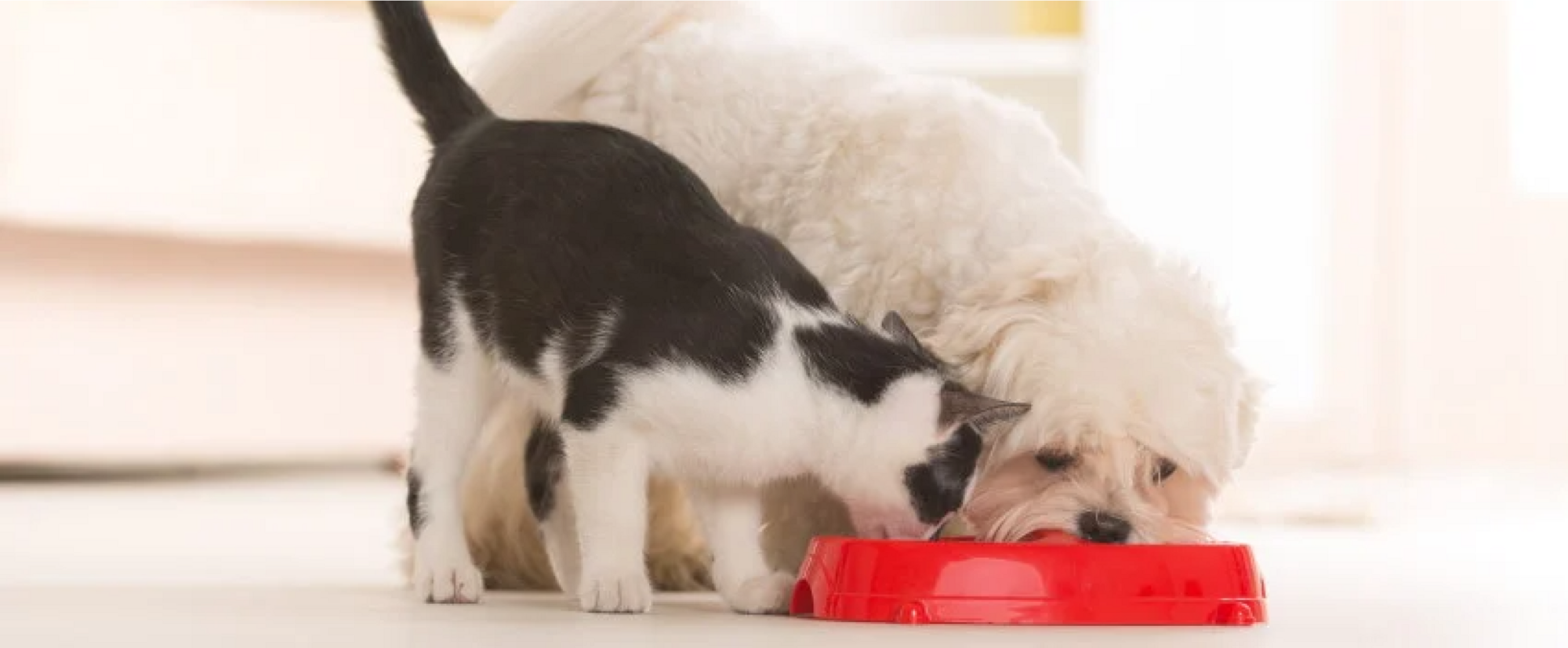
If your cat happens to have a few bites of your dog's food once or twice, it's unlikely that they will experience any issues (unless your cat has an underlying allergy or health condition). Although it most likely won't result in any serious complications, cats may experience vomiting or diarrhoea from the sudden dietary change.
Although dog food is not toxic to cats, consuming dog food regularly can lead to serious health complications as dog food lacks the vital specific nutrition that cats require. This can lead to nutritional deficiencies with many serious health implications. Long-term effects of consuming dog food can include protein malnutrition, heart disease, eye disease, weakened immune system and organ damage.
How Do I Prevent My Cat Eating My Dog's Food?
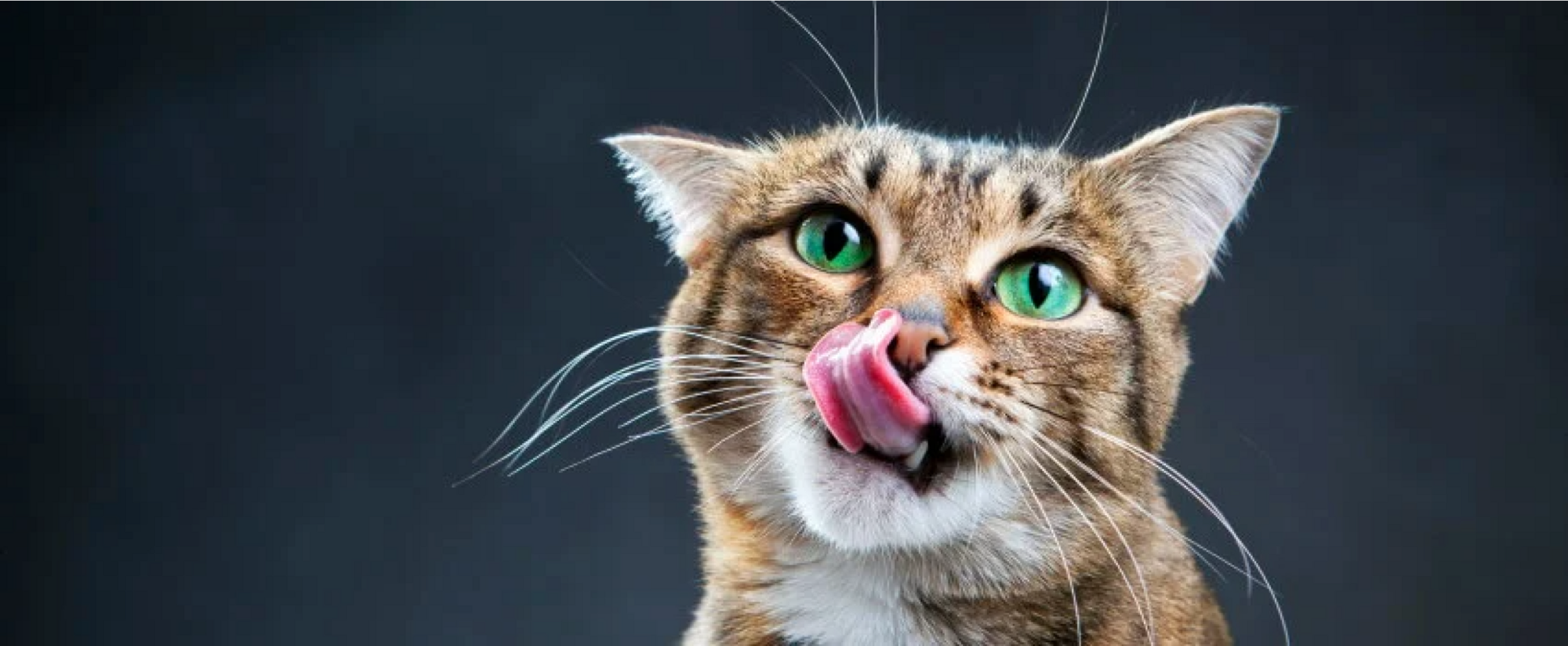
Feed them separately
Create physical distance between your cat and dog to encourage them to eat their own foods and avoid stealing one another's meal. This can involve separate rooms, or feeding your cat inside whilst your dog is outside, or else use a gate or closed door to physically separate them during feeding time. If space is limited, you can put your cat's bowl on elevated spot (eg table) where your dog can't reach.
Avoid free-feeding
Schedule your dog's feeding at times where you can confine your cat away, rather than leaving their food out for your cat to potentially steal. For example, feed your dog at a scheduled time (eg twice a day) outside (whilst keeping your cat inside) and remove any uneaten food after 15 minutes to avoid your cat getting at the food.
Use an automatic feeder
Place an automatic feeder for your cat and dog in separate locations. Using a microchip feeder ensures that only the pet who the food is intended for will be able to access it. Since cats typically eat multiple smaller meals throughout the day, their automatic feeder can be set to open several times a day to help reduce your cat's appetite for your dog's food.
Store pet food securely
Make sure to store your dog's food in an air-tight plastic container in a safe place away from kitty paws!
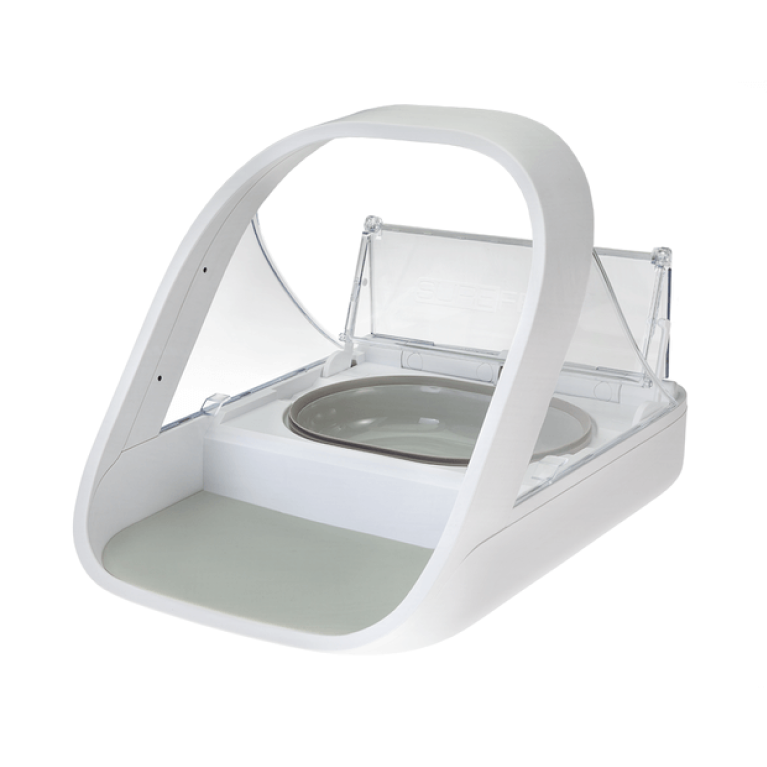
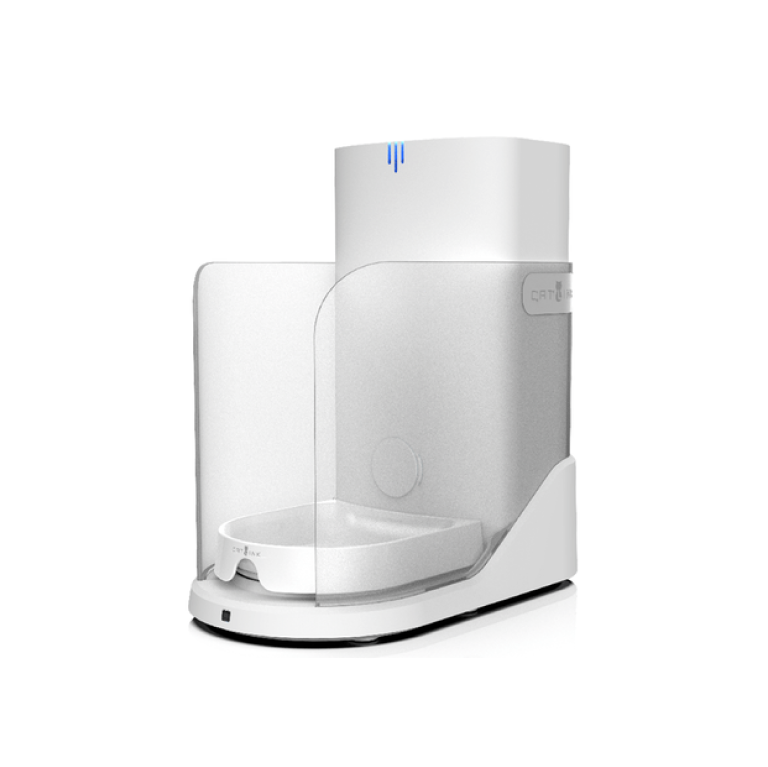
So What Should I Feed My Cat?
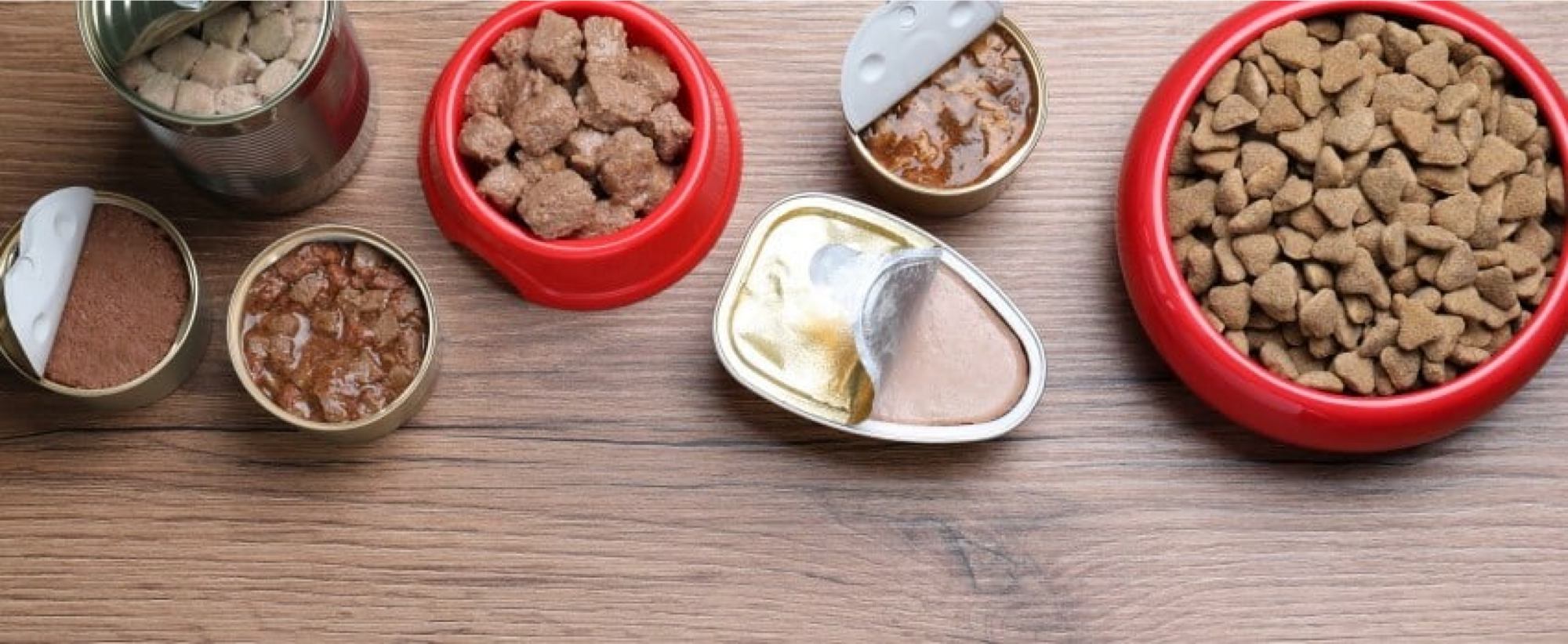
Most commercial cat foods are safe for cats, however check that your cat's food meets the AAFCO pet food guidelines to ensure that your cat will receive all the nutrients they require in the correct ratios.
Rather than simply meeting AAFCO requirements, many higher-end premium pet food brands conduct laboratory analyses and feeding studies to determine the optimum levels of nutrients in their food, as well as regular batch testing to ensure consistency. You can check whether your pet's food is considered complete and balanced, and how this was determined (ie. through a feeding trial or by meeting guidelines) by looking for an AAFCO statement on the product packaging.
Feeding your cat a premium brand diet ensures you are providing them with the best nutrition possible. Premium brands formulate their cat food based on cat's biology and specific nutritional requirements, as well as lifestage (eg kitten, adult, senior), health conditions, breed and activity level (indoor vs outdoor) to ensure the best tailored nutrition.
As mentioned above, adequate water intake is so important in cats due to their low thirst drive. Feeding part of your cat's diet as wet food helps increase your cat's water intake due to wet food's high moisture content (wet food contains 70-80% moisture, compared to dry food which contains around 10% moisture).
If your cat has a medical condition, it is best to speak to your vet regarding which diet is best to suit their needs, as a specific veterinary prescription diet may be indicated.
Conclusion
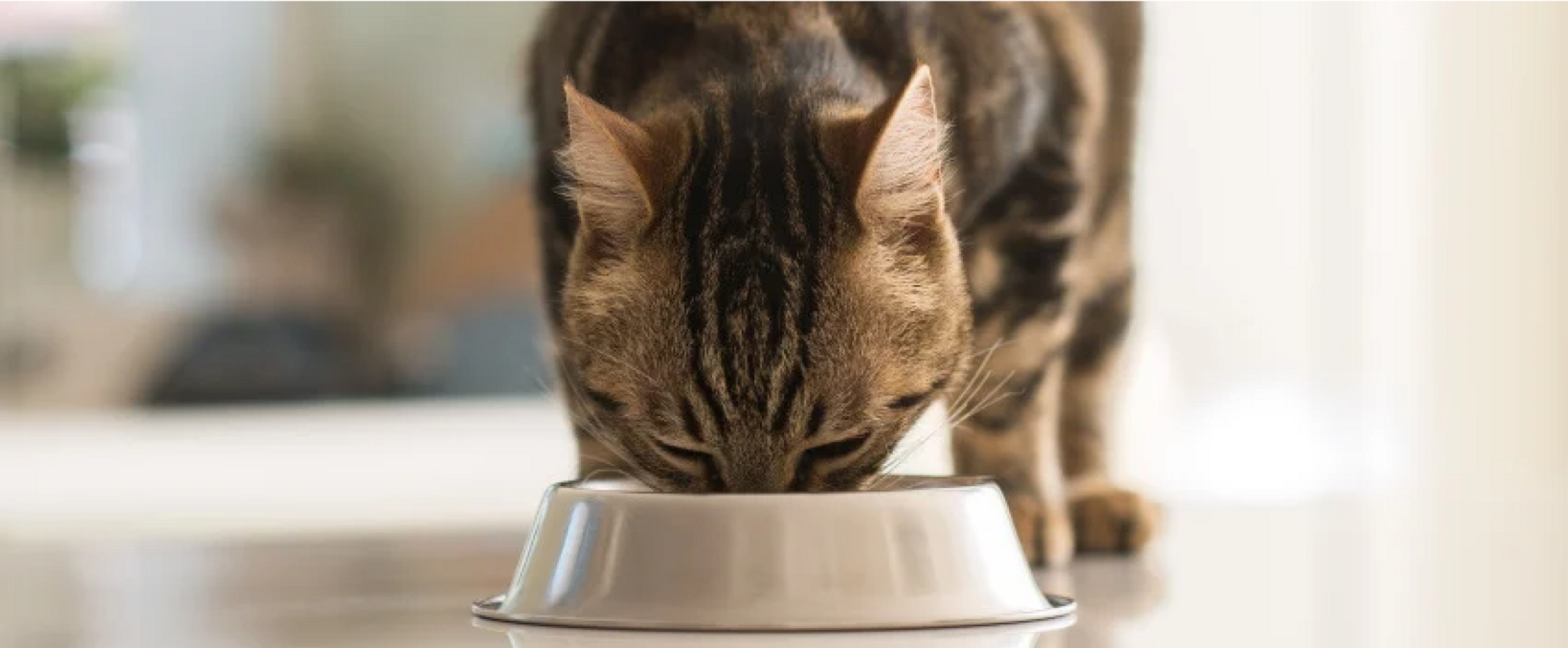
Cats have different nutritional requirements to dogs, and ultimately dog food does not provide cats with the proper nutrition they require and can in fact lead to many serious nutritional deficiencies and health issues.
Whilst stealing a small amount of your dog's food once is okay, it's important to ensure you are providing your cat with the essential nutrients they require through a high quality cat food on a daily basis to ensure they stay healthy.
Ensure your cat is receiving all the protein, amino acids and vitamins they require by feeding them a complete and balanced commercial cat food suitable for their age, lifestyle, breed and any medical conditions they may have. Also check for the AAFCO statement on the product packaging for extra assurance.
Reach out to your veterinarian to receive tailored advice about the best nutrition as well as feeding guide for your feline friend.
Further reading
Want to know more? Check out our Discover Page for more tips on keeping your pets happy and healthy.